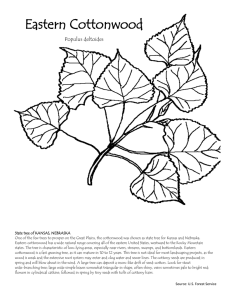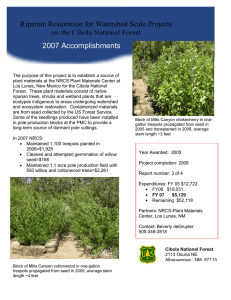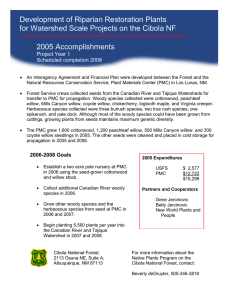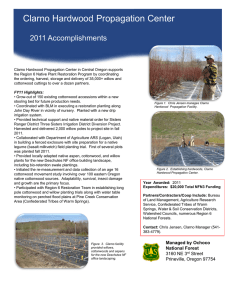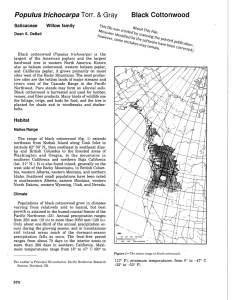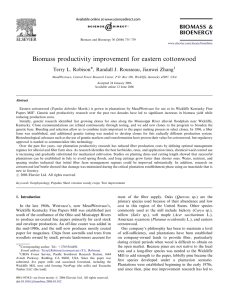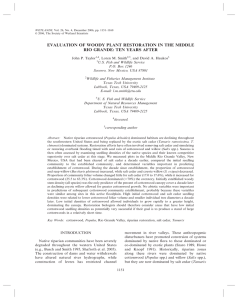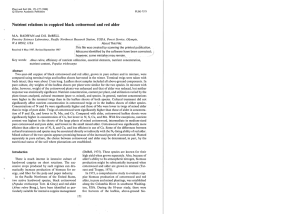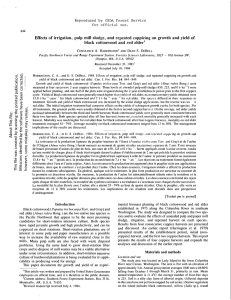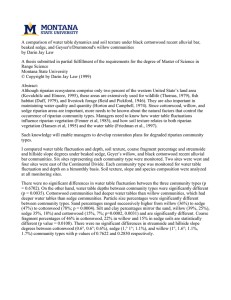Black Cottonwood- Willow Definition and composition.
advertisement
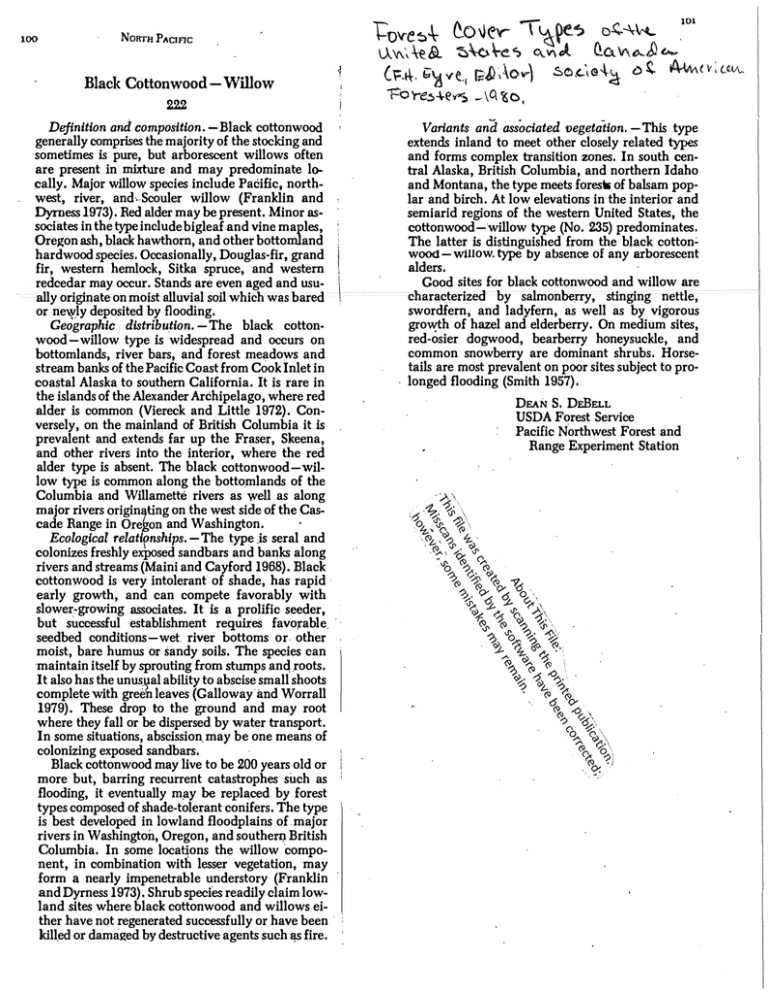
101 100 o\)ev- \ o 1=ov-e U.\f\\ \ & \-¢. \-e C\,"' J. O.Cl V\ eo..J'J t..( -t\-, b"'aV>e.1 ;A} \ov-) s.ot..le-\. 6 A-I.Mo:u�A.- NORTH PACIFlC Black Cottonwood- Willow "Fore:; -+e>tS 222 Definition and composition. -Black cottonwood generally comprises the majority of the stocking and sometimes is pure, but arborescent willows often are present in mixture and may predominate lo­ cally. Major willow species include Pacific, north­ west, river, and,.Scouler willow (Franklin and Dyrness 1973). Red alder may be present. Minor as­ sociates in the type include bigleaf and vine maples, Oregon ash, black hawthorn, and other bottomland hardwood species. Occasionally, Douglas-fir, grand fir, western hemlock, Sitka spruce, and western redcedar may occur. Stands are even aged and usu­ ally originate on moist alluvial soU which was bared or ne'f.lY deposited by flooding. Geographic . distribution.-The black cotton­ wood-willow type is widespread and occurs on bottomlands, river bars, and forest meadows and stream banks of the Pacific Coast from COok Inlet in coastal Alaska to southern California. It is rare in the islands of the Alexander Archipelago, where red alder is common (Viereck and Little 1972). Con­ versely, on the mainland of British Columbia it is prevalent and extends far up the Fraser, Skeena, and other rivers into the interior, where the red alder type is absent. The black cottonwood-wil­ low type is common along the bottomlands of the Columbia and WUlamette rivers as well as along major rivers origin,ting on the west side of the Cas­ cade Range in Oregon and Washington. Ecological relati nships.- The type .is seral and colonizes freshly exposed sandbars and banks along rivers and streams (Maini and Cayford 1968). Black cottonwood is very intolerant of shade, has rapid early growth, and can compete favorably with slower,.growing associates. It is a prolific seeder, but successful establishment requires favorable. seedbed conditions-wet river bottoms or. other moist, bare humus or sandy soils. The species can maintain itself by sprouting from stumps an .roots. It also has the unusual ability to abscise small shoots complete with greJn leaves (Galloway·imd Worrall 1979). These drop to the ground and may root where they fall or be dispersed by water transport. In some situations, abscission. may be one means of colonizing exposed sandbars. Black cottonwood may live to be 200 years old or more but, barring recurrent catastrophes such as flooding, it eventually m y be replaced by forest types composed of shade-tolerant conifers. The type is best developed in lowland floodplains of .major rivers in Washington, Oregon, and souther British Columbia. In some locatipns the willow ·compo­ nent, in combination with lesser vegetation, may form a nearly impenetrable understory (Franklin and Dyrness 1973). Shrub species readily claim low­ land sites where black cottonwood and wlllows ei­ ther have not regenerated successfully or have been kill.ed or damaged by destructive agents such 1l5 fire. - \C\ c, Variants and associated vegetation. -This type extends inland to meet other closely related types and forms complex transition zones. In south cen­ tral Alaska, British Columbia, and northern Idaho and Montana, the type meets forests of balsam pop­ lar and birch. At low elevations in the interior and semiarid regions of the western United States, the cottonwood--willow type (No. 235) predominates. The latter is distinguished from the black cotton wood-willow, type by absence of any arborescent alders. Good sites for black cottonwood and willow are characterized by salmonberry, stinging nettle, swordfern, and ladyfern, as well as by vigorous gro h of hazel and elderberry. On medium sites, red-osier dogwood, bearberry honeysuckle, and common snowberry are dominant shrubs. Horse­ tails are most prevalent on poor sites subject to pro­ longed flooding (Smith 1957). DEANs. DEBELL USDA Forest Service Pacific Northwest Forest and Range Experiment Station · ·

